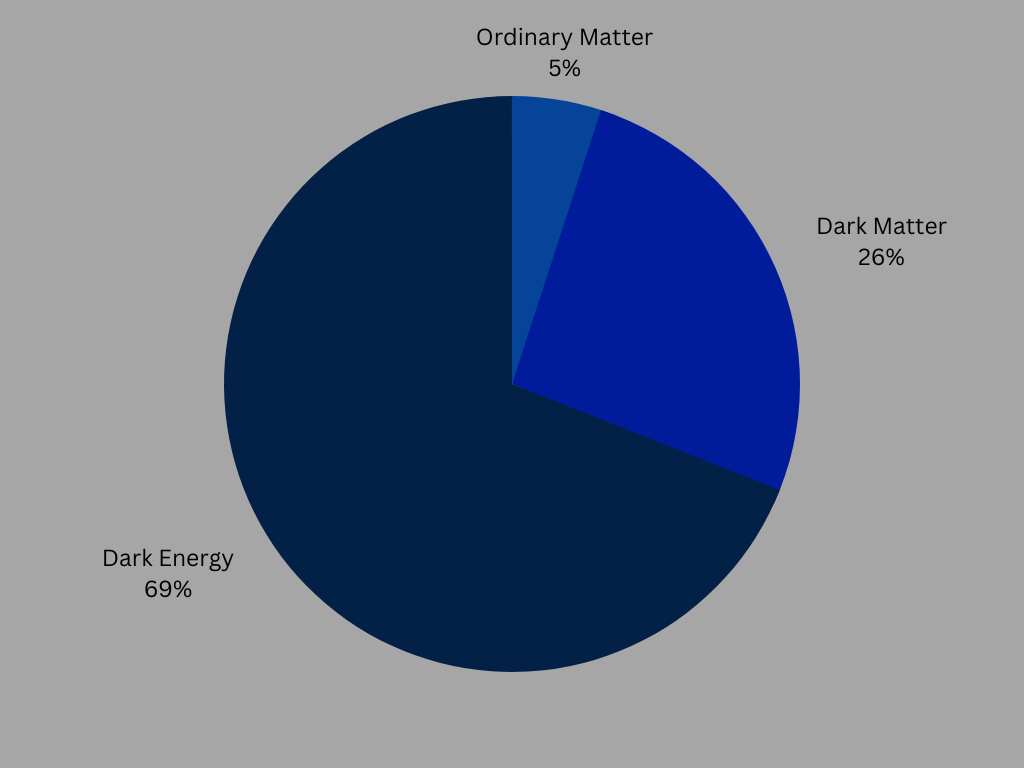Greetings, dear readers!
In today’s episode, we delve into the mysterious realms of dark energy and dark matter, challenging our understanding of the cosmos.
As we look around, everything we see, touch, and know is composed of atoms. Despite everything around us being composed of atoms, the surprising revelation is that this "everything" makes up only about 5% of the universe. This includes us, Earth, planets, the sun, stars, the Milky Way, and all other galaxies—just a mere 5%. What about the remaining 95%?
Dark Matter and Dark Energy make up the remaining 95%
The reason we can’t see Dark matter is because it doesn’t interact with light so how do we know it’s even there? Fritz Zwicky's 1933 revelation showed that galaxies were moving faster than observable mass could explain (gravity). Additionally, gravitational lensing, where light bends around massive objects, further hints at the unseen. Calculations based on these phenomena indicated missing mass. Stars within galaxies were moving faster than expected, implying the presence of more mass than visible matter accounts for.
Dark matter's significance becomes evident in scenarios where galaxies wouldn't hold together without its gravitational strength. Despite uncertainties about its exact nature, we know what dark matter is not—it's not planets, stars, anti-matter, clouds, dust, or large black holes.
The leading theory proposes that dark matter comprises Weakly Interacting Massive Particles (WIMPs), offering a plausible explanation for its weak interaction with electromagnetic forces. The mystery persists, but these discoveries propel us into the intriguing frontier of the unknown. The mystery persists, but these discoveries propel us into the intriguing frontier of the unknown.
Quote of the Week: Anyone who has never made a mistake has never tried anything new.
Keep dancing through the cosmos of knowledge! Until next time, stay curious.






WAH, so dark and mysterious. Ye matter itna dark hai, so much dark energy. Stay positive in this dark world 👍😞
Interesting 🧐